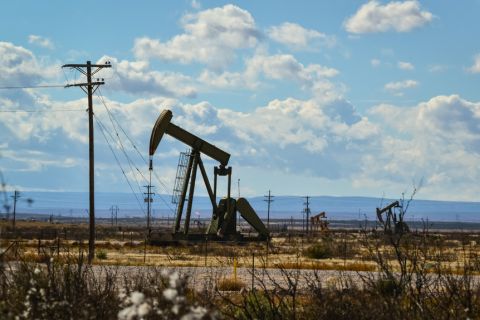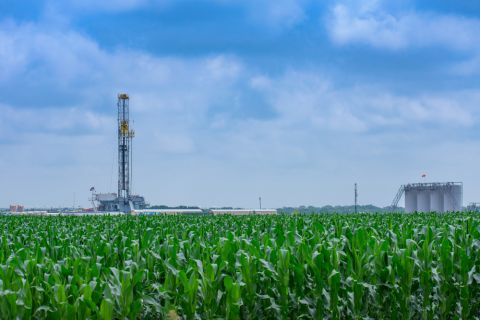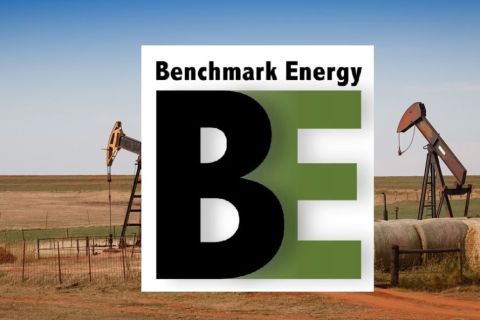Presented by:

The road to net-zero emissions is long and complex. Even so, it is one of the most exciting and meaningful innovation challenges in human history.
With more governments, businesses and people coming together to help lay the foundation of a sustainable energy future, quantifiable progress continues to accelerate. And while it takes significant momentum to roll up into a new epoch, McDermott’s people are proactively focused on making a measurable difference through the mitigation of carbon emissions, especially within the upstream facilities they design and build.
According to the International Energy Agency, hydrocarbon production makes up 15% of energy-related greenhouse-gas (GHG) emissions—posing a sizable challenge for energy companies to address.
“McDermott is collaborating closely with our partners to drive down emissions and the embedded carbon in the facilities we design and build,” said Neil Mackintosh, McDermott’s vice president of engineering studies. “These efforts have identified opportunities to reduce emissions from offshore gas compression facilities by 76% and, in our LNG facilities, reduce emissions by 70%.”
These targets, Mackintosh added, can be achieved with a minimal increase in total expenditure.
These reductions emerge as a result of innovative engineering solutions that span from concept to commissioning—to decommissioning itself—and consider all aspects of operation, logistics, embedded carbon and carbon offsets.
“Our net-zero offshore facilities of the future build on the decades of experience McDermott possesses designing and building complex offshore facilities,” said Vaseem Khan, McDermott’s Global Vice President of Operations Performance and Digital. “By using a systems design approach—typically used by NASA in designing crafts for the exploration of space—we developed a menu of options that allows our customers to transition to net zero and low carbon energy production using a digital platform that moves the industry from sharing documents to sharing data.”
Khan noted that big data is increasingly providing organizations compelling and informative perspectives into operational efficacy, especially within the framework of advancing sustainable energy solutions.
“One of those stories being told in big data seems to repeat itself quite loudly throughout our industry,” Mackintosh said. “Reducing complexity within the design and operation of a facility, through better technology and smart processes, directly correlates with a reduction in carbon emissions.”
Digital technology is enabling brave, new design possibilities in the offshore world.
“For instance, a crewless facility, operated remotely and powered from an onshore green energy source, when possible and cost effective, would yield significant opportunities to reduce carbon emissions over the facility’s complete lifecycle,” Khan said.
That includes both the reduction of logistic-related emissions as a result of traveling to and from the facility and reductions through the elimination of all the normal support infrastructure and associated power demand necessary to live on the facility.
Meanwhile, the overall upstream supply chain supporting capital projects poses many opportunities to reduce carbon emissions.
“No one can look at every moving piece when it comes to large-scale energy projects,” Mackintosh said. “That means we have to work together to enhance how and why each piece is a good fit for the end result. Steel, pipe and other permanent materials necessary for a project should obviously be evaluated based on cost and quality—but also the carbon cost they bring to the equation as well.”
Such data, Khan added, is already having a powerful effect on the direction of capital projects.
“It’s about being able to tell an accurate and accessible story,” Khan said. “Our customers must be able to explain how they’re quantifiably delivering on their net-zero promises. We want the same and we want to work with partners and vendors who want the same. It’s through this shared spirit of cooperation that, together, our industry is navigating itself where it needs to go to responsibly power the next generation of energy solutions.”
To learn more, visit McDermott at booth 1565.
Recommended Reading
Novo II Reloads, Aims for Delaware Deals After $1.5B Exit Last Year
2024-04-24 - After Novo I sold its Delaware Basin position for $1.5 billion last year, Novo Oil & Gas II is reloading with EnCap backing and aiming for more Delaware deals.
Enverus: 1Q Upstream Deals Hit $51B, but Consolidation is Slowing
2024-04-23 - Oil and gas dealmaking continued at a high clip in the first quarter, especially in the Permian Basin. But a thinning list of potential takeout targets, and an invigorated Federal Trade Commission, are chilling the red-hot M&A market.
EIA: Permian, Bakken Associated Gas Growth Pressures NatGas Producers
2024-04-18 - Near-record associated gas volumes from U.S. oil basins continue to put pressure on dry gas producers, which are curtailing output and cutting rigs.
Benchmark Closes Anadarko Deal, Hunts for More M&A
2024-04-17 - Benchmark Energy II closed a $145 million acquisition of western Anadarko Basin assets—and the company is hunting for more low-decline, mature assets to acquire.
‘Monster’ Gas: Aethon’s 16,000-foot Dive in Haynesville West
2024-04-09 - Aethon Energy’s COO described challenges in the far western Haynesville stepout, while other operators opened their books on the latest in the legacy Haynesville at Hart Energy’s DUG GAS+ Conference and Expo in Shreveport, Louisiana.





